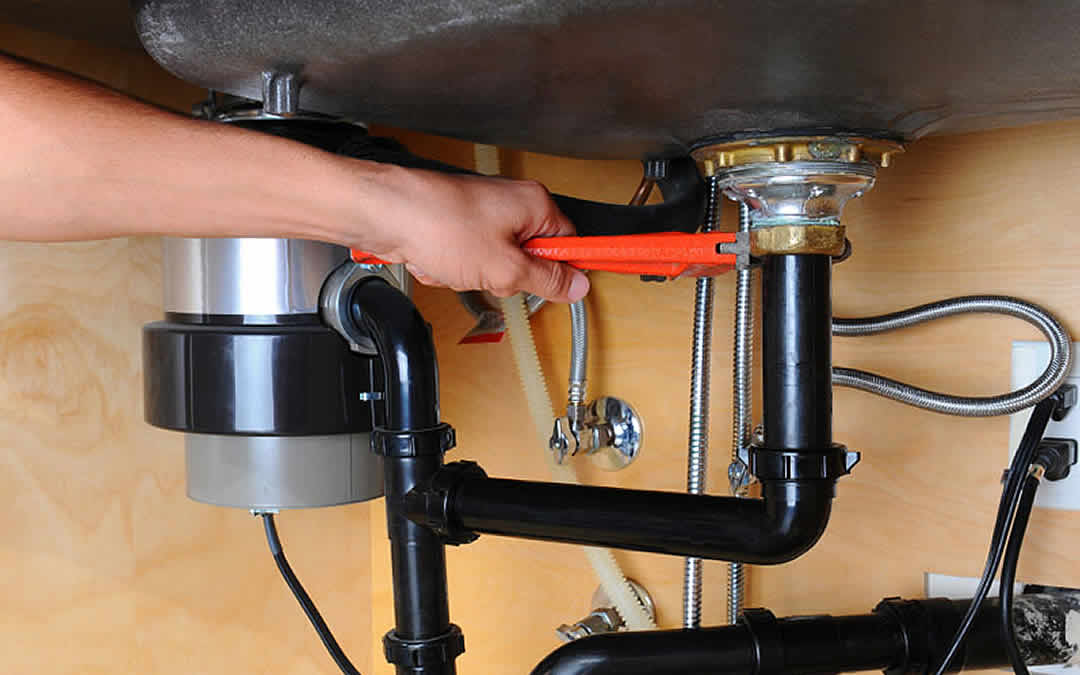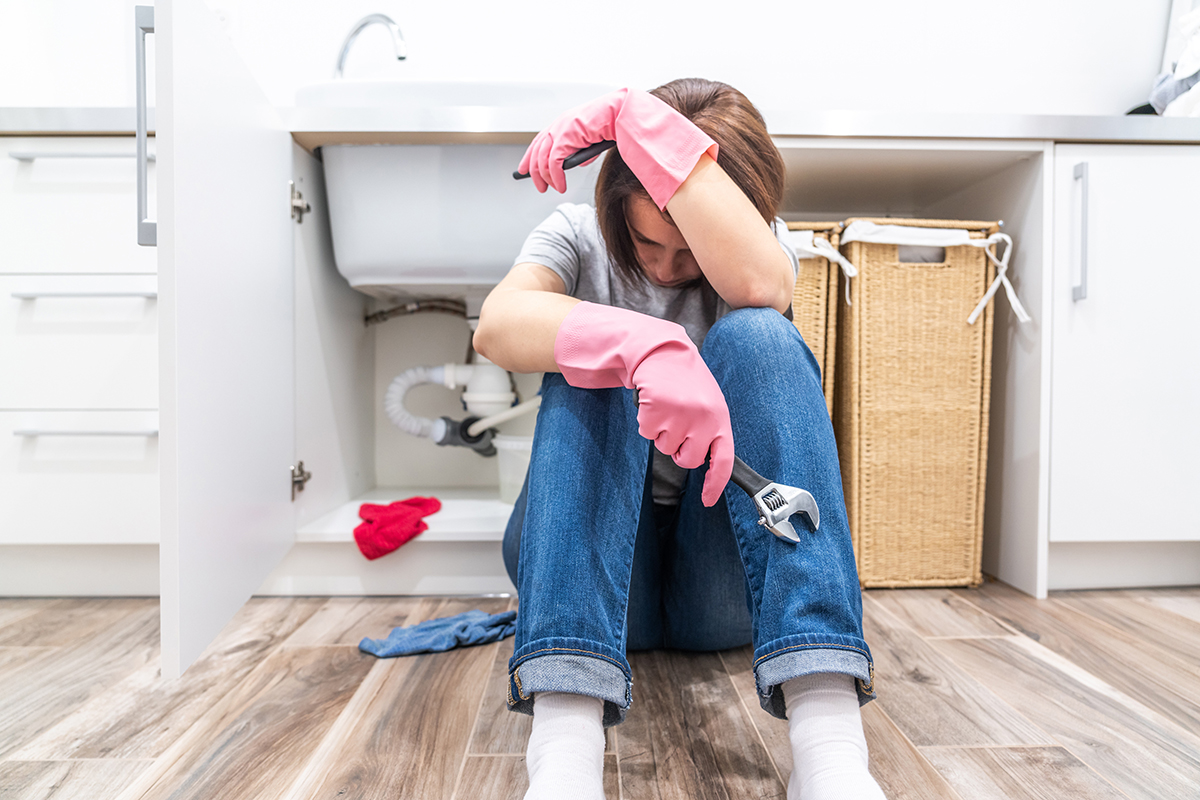My Guide to Resolving a Leak in Your Garbage Disposal
My Guide to Resolving a Leak in Your Garbage Disposal
Blog Article
Each person will have their own way of thinking in relation to Why Is .

Waste disposal unit are vital kitchen area home appliances that assist in disposing of food waste effectively. However, a leaking waste disposal unit can be an irritating and unpleasant problem to deal with. Thankfully, many leakages can be taken care of easily with a few easy actions. In this write-up, we will go over exactly how to take care of a dripping garbage disposal properly.
Intro
Garbage disposals are set up under kitchen area sinks and are made to shred food waste right into smaller sized pieces, permitting it to travel through the pipes system easily. While these gadgets are normally dependable, leaks can happen over time due to damage, loose links, or damages to the unit.
Usual Root Causes Of Leaks in Rubbish Disposals
Worn Seals and Gaskets
Seals and gaskets play a vital duty in preventing water from dripping out of the waste disposal unit. Over time, these components can deteriorate, bring about leakages around the disposal unit.
Loose Connections
The connections in between the waste disposal unit and the pipes system can end up being loosened over time, causing water to leakage out during procedure.
Splits or Openings in the Disposal System
Physical damages to the garbage disposal, such as cracks or openings in the real estate, can likewise cause leakages.
Recognizing the Resource of the Leak
Before trying to take care of a leaking garbage disposal, it is important to identify the source of the leakage. This can usually be done with visual assessment or by carrying out basic examinations.
Visual Inspection
Evaluate the waste disposal unit system carefully for any type of indicators of water leak. Pay very close attention to areas around seals, gaskets, and link factors.
Examining for Leaks
One method to evaluate for leakages is by running water through the disposal unit and looking for any type of noticeable signs of leakage.
Devices and Materials Needed for Dealing With a Leaking Garbage Disposal
Prior to beginning the repair process, gather the required tools and materials, consisting of a screwdriver, flexible wrench, plumbing technician's putty, replacement seals or gaskets, and epoxy or patching product for fixing splits or holes.
Step-by-Step Guide to Repairing a Dripping Waste Disposal Unit
Turn Off the Power
Prior to trying any repair work, ensure that the power to the garbage disposal device is turned off to avoid the risk of electrical shock.
Locate the Leakage
Determine the precise area of the leakage and establish the reason.
Tighten up Connections
Use a wrench to tighten up any type of loose links between the disposal system and the pipes system.
Replace Seals or Gaskets
If the leakage is because of used seals or gaskets, get rid of the old elements and change them with brand-new ones.
Patching Cracks or Openings
For splits or openings in the disposal device, use epoxy or an appropriate patching material to seal the damaged area.
Checking the Waste Disposal Unit After Repair Work
As soon as the fixing is complete, evaluate the garbage disposal by running water through it to make sure that the leakage has been dealt with.
Preventive Upkeep Tips to Avoid Future Leaks
To stop future leaks, it is essential to carry out regular upkeep on your waste disposal unit. This consists of maintaining it clean, preventing placing non-food things or tough objects down the disposal, and periodically checking for leaks or various other problems.
Final thought
Finally, fixing a dripping garbage disposal is a relatively straightforward procedure that can be finished with standard tools and materials. By following the steps laid out in this post and practicing preventative maintenance, you can keep your waste disposal unit in good working condition and stay clear of pricey repair services in the future.
What to Do About a Leaking Garbage Disposal
A leaking garbage disposal often goes unnoticed until you confront a sopping cabinet, a foul-smelling puddle, or an audible drip-drip-drip from the unit. The fix can be frustrating, too, because the leak can stem from a number of components in the system. Fortunately, with a little sleuthing, you can zero in on the leak and—depending on the exact location—stop the icky oozing and repair the component that caused it. Worst case scenario, if it turns out that the garbage disposal must be replaced, installing a new one is a reasonable do-it-yourself task for those with basic plumbing skills. Read on to keep the cash you’d otherwise hand over to a pro.
Prepare to find the leak
Prior to testing the garbage disposal for leaks, unplug it at the wall outlet and turn off the power from the breaker box to prevent electrical shock. Then insert a watertight sink stopper into your sink drain and wipe the unit dry with a clean cloth. In any handy container, mix a few drops of food coloring into a few cups of water, and pour the dyed water onto the sink stopper to help you locate the leak.
Investigate the source
the top, where the disposal meets the sink drain the side, where the dishwasher hose or main drain pipe connects to the disposal or the bottom of the unit Inspect each of these locations while gliding a light-colored rag over the unit; the dyed water will readily show on the rag and reveal the location of the leak. If a leak isn’t immediately apparent, remove the sink stopper and pour a few more cups of dyed water down the sink drain, then check for leaks again. Leaks near the top of the unit are more likely to show themselves while the sink is plugged, while side and bottom leaks are more noticeable while the sink is unplugged.
The metal sink flange that sits directly inside the sink drain is typically sealed around the top with plumber’s putty (a clay-like sealant) and then secured from under the sink with bolts. If the plumber’s putty deteriorates, or the bolts loosen, the flange can no longer form a watertight seal between the sink drain and the disposal—which could cause a leak at the top of the unit.
To reseal the leaky flange, you must first detach the garbage disposal. Start by loosening the screws securing the main drain pipe to the disposal, then loosen the screws in the metal clamp securing the dishwasher hose to the disposal and detach the drain pipe and dishwasher hose from the disposal. Loosen the screws in the mounting ring that connects the disposal to the metal mounting assembly beneath the sink, then pull down the disposal and carefully set it on a clean, dry surface. Loosen the bolts in the mounting assembly with a wrench, then pull down the mounting assembly and set it near the disposal.

I'm certainly very taken with How to fix a pretty consistent leak from my garbage disposal and I hope you enjoyed reading our entry. Do you know anybody else who is intrigued by the niche? Feel free to promote it. Thank you so much for taking the time to read it.
Call Us Today Report this page